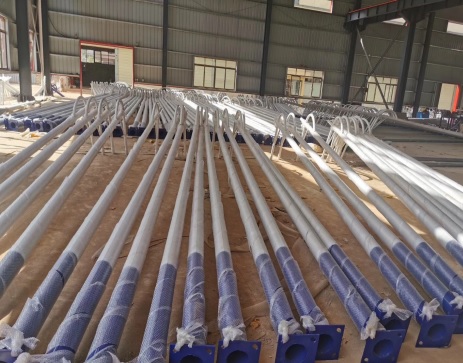BETTER TOUCH BETTER BUSINESS
Contact Sales at Litel Technology

The functionality of street and area light poles is multi-faceted, which necessitates the need for them to be highly durable, sturdy and weather-resistant. Light poles or lampposts are "engineered" structures, designed to support single or multiple luminaires. They may also be used to support signs, pennants, banners, flower pots and other decorative items. This guide covers the selection of light poles.
The primary function is to resist the physical forces of luminaire weight, ice and wind loads that light poles may encounter during their expected design life. Along with the foundation system, the primary force a pole must withstand is from wind. Since the street lighting will play an extremely beneficial role in facilitating security and safety to pedestrians and other road users, there is an elevated focus on the dimensional and structural integrity of light poles.
You can find a huge variety in pole heights, shapes and sizes, as well as the quantity and size of the luminaire to be supported, along with other items that can be attached to the pole, such as a camera to augment the safety factor.
The following factors should be considered when determining pole selection. It can be helpful to create a worksheet that lists all required data in order to finalize pole requirements.
Pole Height: Usually determined by the lighting survey, which will also include the number of poles, luminaire model number(s) and quantity of luminaires per pole.
Speed of wind in mph: It is critical to consult local authorities to gather correct data on wind speed in the job site so that correct pole size can be installed. In areas with the open and flat terrain, wind-induced vibrations (harmonic vibration behaviour) are likely to occur that require special attention. Although it’s extremely difficult to predict the happening of these vibrations, it’s good to take preventative measures to allay the risks.
Brackets and arms: Brackets, when used, also have weight and EPA ratings and should be listed.
Luminaire selection: The type of luminaire model may be determined by the lighting survey or recommended by a lighting consultant. Note its EPA, weight, mounting method (side mount, top mount, floodlight brackets, etc.) and the distance from the centerline of the pole to the luminaire center.
Finish and color: Generally, the powder coat finishes used today are excellent for most environments due to their durability and color retention. Bronze is the most common, but many colors are available.
Auxiliary lighting: Aside from general purpose area lighting, poles may also frequently be used for special task lighting applications such as building or sign illumination. These lights may be mounted at various locations on the pole. The EPA, quantity and MH of these lights should be recorded.
Pole material: The designer or owner may select the pole material. Common materials include steel, aluminum and fiberglass, with steel being the most common. Poles can also be made from concrete, cast-iron and wood.
Besides general purpose area lighting, the poles may also be used for other applications like a sign or building illumination. Such lightings are often located at different locations on the pole - an important consideration when deciding on the right type of light pole for your application.
Copyright © 2025 Guangzhou Litel Technology Co.,Ltd. | All Rights Reserved
We are here to help you! If you close the chatbox, you will automatically receive a response from us via email. Please be sure to leave your contact details so that we can better assist